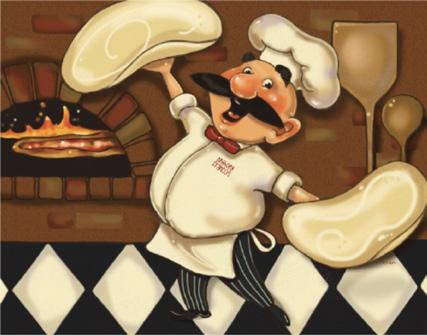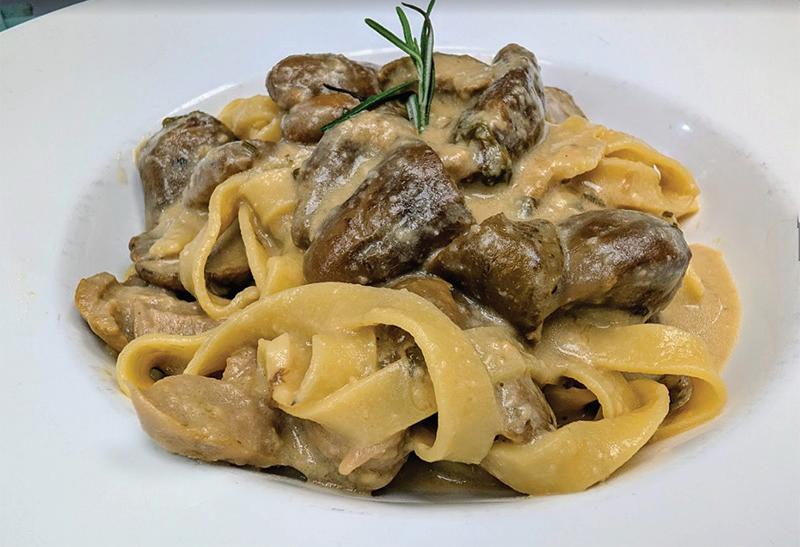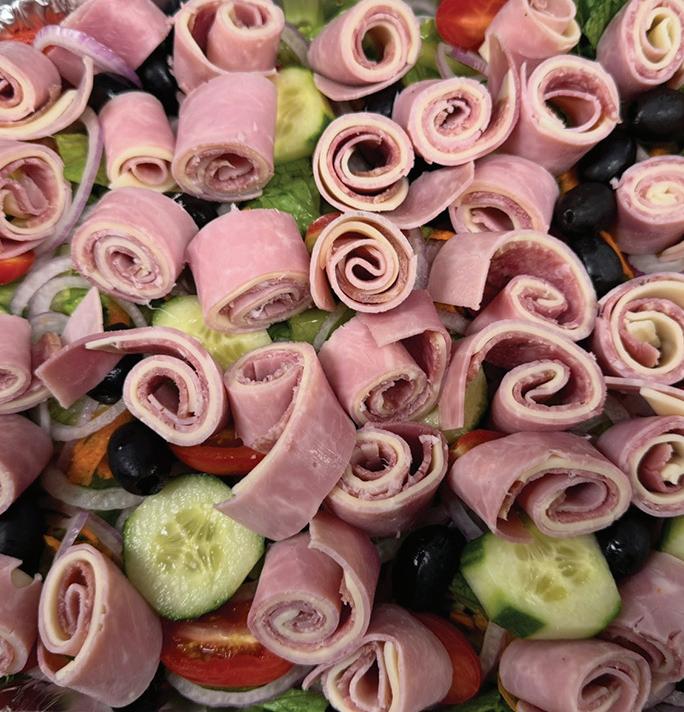

Operation Christmas Child



By Elsie Walker
It is all about that one child. That child may be in an orphanage or other bleak situation somewhere in the world, has little, and has never felt what it is to be loved. They don’t know that Christmas is the story of the birth of Jesus or who Jesus even is. But with the arrival of a shoebox of items and the sharing of the gospel stories, that changes. That is how Kimberly Blewitt of Succasunna sees Operation Christmas Child. Blewitt is a church relations member at Ledgewood Baptist Church, a part of the northwestern New Jersey area for Operation Christmas Child. Through Operation Christmas Child, a project of Samaritan’s Purse International, love is spread to children around the world. A child’s life can be changed through items put in a shoebox, the love given in packing it, and learning the story of Jesus. The collection week for boxes is Nov. 17–24th. There are various drop-off locations. Blewitt has been involved in Operation Christmas Child


for 26 years and recently shared about the project. It all starts with a regular size shoebox. Boxes are given to boys and girls ages 2 - 14. A box is made up of items by the gender and age. Blewitt noted that the box should include one item that, if you were a kid, you’d say “wow” when you saw it. That could be a stuffed animal, a toy car, a doll, etc. Other items could be clothing, school supplies, or hygiene items. It may be thought that hygiene items like a toothbrush or washcloth aren’t much of a gift to give, but for a child who has to share a toothbrush or washcloth with 10 other people, to have their own is
a wonderful thing.
There are certain things that can’t be put into a box such as items with expiration dates, perishable items, breakables, soap, and others listed on the Operation Christmas Child webpages of Samaritan’s Purse’s site.
Blewitt noted that people might consider putting a letter or photo in the box, too. She shared another thing to do is pray for the child getting the box. Also, to help the boxes reach their destination, Samaritan’s Purse asks for a $10 donation towards postage for each box.
Blewett shared that last year, the Ledgewood dropoff site got 4,025 boxes.





Throughout Northwest New Jersey (Morris and Sussex counties), 13,722 boxes were collected. More are always needed.
The boxes go to over 140 countries. Some might wonder what to get since the person sending the box doesn’t know where it is going. Blewitt noted that “God knows what the child needs.” She shared about a child in Africa getting heavy mittens. People would not think the child would have use for those in his climate. However, the child’s mother supported the family by making pottery and the child’s job was to take the pieces from the fire pit. The
















On September 27th, the Borough of Bloomingdale conducted the official grand opening for Bycaro Diner to their business community. The Bycaro Diner offers delicious breakfast, lunch and dinner in a community focused atmosphere. The diner is located at 126 Union Ave. in Bloomingdale.






Pictured: Mayor John D’Amato, owners Byron Santizo and Carlos Salmeron, accompanied by Councilmembers Dave Bronkhurst, John Graziano, and Evelyn Schubert, the Economic Development Commission’s Jen Hagin, Michelle Reynolds, Nadia Hussain, and Leanne Scaturro, with Shelby Reynolds and Marya Scaturro.








The PerfecT Tux. The PerfecT Price.



Dr. Frank Plateroti Announces the Release of the Second Edition of Speak No Evil In Search of our
Self-Esteem, Self-worth, and Self-empowerment
New Jersey Author's New Book Now Available on Amazon
Dr. Plateroti released the Second Edition of Self-Esteem, Self-worth, and Self-empowerment.
Speak No Evil is that rare book that challenges the way we view ourselves and others, and how we seek and cultivate lasting friendships, and most importantly familial and romantic relationships. Based on the success of his First Edition, this expanded Second Edition in response to readers’ requests, includes an in depth and enlightening focus on the development of romantic relationships, unconditional love, and overcoming the many of their challenges. It also further focuses on familial relationships and the destruction of gossiping and eliminating toxic environments. It explores how we communicate based on our nature or nurture, with discussions on ways to improve both.
Dr Plateroti takes the culmination of over twenty years of teaching communication strategies and concepts he developed while teaching and counseling university students to inspire open conversations and self-reflection. Reflecting on his vast teaching experience, he claims, “It is the most rewarding experience and period of my career.”
Whether you are a student, business leader, artist, teenager, retiree, or particularly a parent, Speak No Evil will speak to you.
Dr. Frank Plateroti earned his Doctorate Degree in Education Research and a Master’s Degree in Communication. Prior to his teaching he worked in public relations, broadcasting as a producer, a director, an editor, and a writer, with his own international production company.
http://drfjpesteem.com/


Now Available on , and other Online Book Sources
Dr. Frank Plateroti earned his Doctorate Degree in Education Research, with a concentration in psychology. He also earned a Master’s Degree in Communication, with a concentration in television and film production. For over twenty years, Dr. Plateroti had taught in the communication department at William Paterson University. Prior to his teaching. he was an international television producer, writer, and director working with network and cable news companies and formed his own international production company.
In 2024, Dr. Plateroti republished an updated and expanded Second Edition of the first book of his trilogy, East Clifton Avenue, while simultaneously launching Book 2. Book 3, which completes the trilogy, is due to be launched early winter 2026. Negotiations for a cable series are underway. The 2025 Launching of a Second Edition of Speak No Evil, and the East Clifton Avenue trilogy are all under Plateroti Publishing.




Speak No Evil
In Search of our Self-esteem, Self-worth, Self-empowerment, and...True Love
Second Edition
Personal, familial, and romantic relationships are the most important facets of our lives, and at the same time relationships are the most abused facet of the human condition. For anyone looking to improve relationships, especially with the relationship with ourself, Speak No Evil is an important resource. Parents agree that this book is a must read to help children navigate through these most challenging times.
With the upcoming holiday season and relationship challenges, Speak No Evil would make the perfect gift for others and ourself.
Operation Christmas... cont. from front page
mittens provided the protection the child’s hands needed.
The boxes have a long journey. They start at dropoff centers; locally, there are ones in Mt. Arlington, Ledgewood, Livingston, Oak Ridge, Parsippany, Basking Ridge, Chatham, Wayne and Washington. From there, they are put into cartons and taken to collection centers. The collection centers load the cartons onto tractor trailers. From there, the boxes go to processing centers. There the boxes are checked to make sure the boxes have no items that would hurt a child or are on the list of things not to be included. After this, they are put in shipping containers and sent on to the different countries. Once there, local area teams prepare local churches to get the boxes to the children.
Local travel, in some cases,

could even be by elephant, donkey, etc. Once at a destination, the children hear the gospel story of Jesus and receive the boxes. A copy of the gospel stories in the child’s native language is given with each box. Children are invited to come back if they want to learn more about Jesus, but that
is not required to get a box. Boxes go on a long journey and don’t get to the children for Christmas the year they are given. Some are given out the next Christmas or some children experience Christmas in July. The gifts still mean the world to the children. “We hear a lot from these kids
Journey of a Veteran — From Combat to Comfort

By Henry M. Holden

VIt’s like a craft fair everyday

Handmade gifts from over 40 Vendors Quilts, Crocheted items, Jewelry, Wreaths, Chocolates and much more Fri. 2pm-8pm | Sat. & Sun. 10am-6pm 26 Boonton Ave | Butler | (973) 750-1427 NEW VENDORS ACCEPTED
who have received these boxes and are now adults telling their story that they felt loved with this box,” said Blewitt. She shared that the children learn they are a gift to God. Blewitt shared that she gets ”goosbumps’ upon hearing stories which reflect the miracle of the boxes. In one instance, although all the boxes are checked, a boy got a doll in his. However, he was so
happy. His sister had been unable to come to get a box and now he had something to give her. Another child opened his box to find a couple of pencils among the items. He was thrilled because now he could go to school. In some countries, if you don’t have the supplies, you can’t attend school. A young man, who had received a box as a child, shared that in his box was a scarf, but he lived in a



warm climate. However, he kept the scarf. It ended up that when he grew up, he came to the United States: to Buffalo, New York. He still had the scarf, and it came in handy.
For more information on Operation Christmas Child, filling a box, and the local drop-off locations, visit its webpage at https://www. samaritanspurse.org/whatwe-do/operation-christmas-child/


eterans in New Jersey and Morris County face an ongoing crisis with alarmingly high rates of substance abuse, homelessness, mental health struggles, suicides, and denied claims. Despite these challenges, veterans remain an immense source of leadership for our communities and nation and deserve the utmost respect and support.
A major hurdle is the general public’s lack of awareness of the unique hardships faced by those who have served. To overcome this hurdle, Veterans Valor was created to help heal our veterans and to raise public awareness of their sacrifices, resilience, and the resulting
Veterans Valor first proposed the project in February 2023; formal approval came that October.
Veterans Valor a nonprofit organization based in Morristown, dedicated to supporting veterans and their families. cont. on page 6



Journey of a Veteran.. cont. from page 5
The organization focuses on raising public awareness, programs, and creating spaces for veterans to connect and heal from PTSD. What is PTSD and what causes it? Post Traumatic Stress Disorder is a mental health disease. Going through or seeing a life-threatening event can cause PTSD.
If someone has a lot of stress in their life they may start to feel better after a few weeks but if the stress lasts longer, it could be PTSD.
Having up-setting memories, feeling on edge or having trouble sleeping after a traumatic event can be difficult. For some people, the PTSD symptoms may start later.
This new initiative seeks to honor our disabled veterans and teach about how PTSD can be mitigated.
Veterans Valor will honor and stand with those who have served, transforming

the scars of war into spaces of healing through nature, art,
“The County Commissioners are proud to work with the Park Commission and Veterans Valor to create a space that not only honors the service and sacrifice of our veterans but also provides a place for them to help cope with some of the challenges they face when they return home," said Commissioner Douglas Cabana, liaison to the Park Commission.
"Many months of planning led to finally be able to break ground on this important project next month.
The garden will serve as a place for peace, reflection and spiritual renewal while allowing veterans and the broader community to connect. Envisioned as a "living tribute," the garden will host veteran-related art, horticultural programs, wellness seminars and opportunities for creative
expression. At its core is the Disarm PTSD initiative, a campaign to help veterans transform their experiences with service-related trauma into a source of purpose and connection.
Through the Healing Gardens, and supportive programs, will bring veterans and civilians together to restore body, mind, and spirit—turning pain into purpose, isolation into community, and sacrifice into hope.
The mission of The Healing Gardens is threefold: To help heal our veterans, to raise public awareness of their sacrifices, and the need for generosity toward veterans ’services.
“It takes at least 10 years to adjust back to civilian life,” founder Will Draper said. “This is about helping veterans move from duty and hardship to a sense of belonging in the community.”

Journey of a Veteran.. cont. from page 6
How is Veterans Valor going to achieve this? “We have been granted the use of 3/4 acre for the 7 gardens,” said Tom Miller, a Marine Corp veteran.
“I expect in the coming years that this concept will be going nationwide. It will be helping Veterans and civilians coping with PTSD.
“The Veterans Valor project is a collaborative initiative led by the Morristown Rotary in partnership with the County of Morris and various New Jersey nonprofits,” said Draper. “Our mission is to raise public awareness, support, and engagement for veterans and their families. Through our innovative programs, we aim to honor those who served and help facilitate their healing journey.
There are factors that are not under a person's control and can increase the chance that they will have PTSD. Combat is an excellent example. You have very intense or long-lasting traumatic effect or getting wounded during the event and make it more likely that a person will develop PTSD.
After a traumatic event, many times, but not always, the person starts to feel better after a week but if it lasts longer than a few weeks it maybe PTSD.
There are many Veterans struggling and living with post-traumatic stress disorder. With the stigma of PTSD, thousands of veterans do not seek professional help. We want to be part of the solution.”
Social programs and restorative retreats, Veterans suffering from the unseen wounds of service can build healthy, trusted relationships to help overcome mental health conditions, including PTSD and Military Sexual Trauma (MST).
“Our mission at Veterans Valor is to honor and support New Jersey veterans, especially those wounded in or from
war, and their families through impactful initiatives,” said Draper. “We are establishing a healing garden at the, featuring art by or about veterans. This space will be used for seminars, lectures, and programs in art, horticulture, and healing. We aim to elevate public support for veterans and foster a stronger, more inclusive community.”
More than 70 people gathered at the Frelinghuysen Arboretum on October 3 for a signing ceremony launching The Healing Garden, also known as Veterans Valor.
Veterans’ Valor will see the creation of seven unique gardens, each designed to tell the story of soldiers’ sailors, airmen and Marines from the PTSD contact point to a New Life celebrating the journey of healing and reintegration for veterans and their families. How is Veterans Valor going to accomplish this? The first phase, Gateway to the Garden, is fully funded and will break ground Nov. 3, 2025, at 4:30 p.m. Organizers hope to complete it by spring 2026.
SEVEN GARDENS, ONE MISSION
Plans call for seven themed gardens under the concept From Trauma to New Life:
Point of Sacrifice: Honoring bravery and loss.
Medevac: The urgency of rescue and treatment.
Triage: The first steps toward recovery.
Homeward: The emotional return to loved ones.
Recovery: Ongoing mental and physical healing.
Fallen: Remembering those lost after coming home.
New Life: Renewal and hope for veterans.
We’re going to launch a larger fundraising campaign to finance the remaining six gardens, which Draper hopes to see under construction within three years.
He closed the event with a story of meeting a young veteran with prosthetic legs outside a Morristown restaurant.
“I told him, the entire county is coming together for you,” Draper said. “He turned back before getting into his Uber and said, ‘Our paths will cross.’ That’s why we’re here.”
Two years in the making, the Healing Garden is a joint effort among Veterans Valor, the Morris County Park Commission, the Morris County Commissioners, the Rotary Club of Morristown, and other local partners.
“This will be a sanctuary for our veterans seeking peace and healing,” said County Commissioner Doug Cabana. “Morris County puts our veterans first.”
Every veteran’s journey is unique, but there are many who share common experiences as they transition from the battlefield to their homes. Our project seeks to honor this journey through storytelling and support.
In the garden, there is the opportunity to find, and restore self, by losing oneself in the moment instead of feeling isolated or alone what is in a “low flow” state also known as being in the zone. It is a mental state in which immersed in the activity with a positive food and energetic focus. Much as the runner finds himself on a new road or the artist loses time in the world of her creation, getting lost in gardening equates to a common connection beyond consciousness, the chance to experience the full of self-expression, a chance to experience a self beyond pain and loss.
Become a vital part of our mission by volunteering your time and skills. Your support can make a real difference in the lives of veterans.
For more information about the Veterans Valor project, to learn about volunteer opportunities, or to make a donation, please reach out to us: veteransvalorofnj@gmail.com Don’t be afraid to ask for help.








JINGLE FEST CRAFT SHOW
SUNDAY, NOVEMBER 23RD



10am to 5pm A GREAT HOLIDAY SHOPPING EVENT! Over 100 Exhibitors with Arts and Crafts SPONSORED BY CLASS OF 2026 Wayne Hills High School 272 Berdan Ave, Wayne


I Remember Dad:
ther could hardly ever talk about. And, the very few times that he did talk about it, he would get very emotional.



So Be, These Precious Attic Treasures
By Richard Mabey Jr.
My grandmother, Bertha Storms Mabey, once told me that when my dad came home from the war that he became a bit of a recluse. He spent hours upon hours working on his train set layout in the upstairs hallway.

Grandma also told me that Dad lost himself in book after book. Simply put, Dad loved to read.
In 1946, when Dad came home to his family homestead at the end of Mabey Lane, Grandma told me that my father had become very quiet and withdrawn. Dad
had returned from a long stay at Hickam Air Field in Hawaii, which was located right next to Pearl Harbor. While Dad was not present at the time of the Japanese air attack, my father did help in cleaning up Hickam after the Japanese attack. It was something that my fa-
Right after he came home from Hickam Air Field, Dad began working at Moon Carrier Trucking Company. Grandma told me that Dad saved every penny he could. And, in 1950, Dad and his brother, Edward, founded Mabey Trucking Company.
In the year, 2004, my father had a strong, spiritual calling to move to Central Pennsylvania, to live in the midst of the many Amish farms that abounded along the Lincoln Highway, just to the west of Chambersburg. My dear father was now weakened from being in the midst of fighting colon cancer. So, one Saturday, Dad asked me to climb the attic ladder and hand down the boxes and boxes of stuff that had been stored in our attic for years.

As I stood in the attic, facing the windows looking out to Route 202, there on my left hand side, in a corner, were four old cardboard boxes. They were filled with both, paperback and hard cover books. I hollered down to Dad, who was standing by the ladder in the hallway of the old Mabey Homestead of my find. Dad simply asked me
FOWA’S FALL ADOPTION EVENT



cont. on page 9



A great photo of my dad, Richard Mabey Sr., in 1997.
I
Remember Dad... cont. from page 8
to bring them down for him.
There in those four old cardboard boxes were the golden gems of literature. Books by John Steinbeck, Ernest Hemingway and William Faulkner abounded. And, then there was the most precious book of all, a first edition printing of Thomas Wolfe’s classic, “Look Homeward, Angel.”
As Dad and I went through his incredible collection of books, it felt like it was Christmas time. But instead of wrapped gifts, I was opening the cover to some of the greatest books ever written.
I remember this like it was yesterday, Dad proudly proclaimed to me, “you know, Richie, I’ve read every one of these books. Mostly from when I came home from the war, before I met your mother. All I really did back then was work, read books and work on my train layout.”
Then I remember how my father kind of laughed to himself. And then he said with a smile, “of course that all changed after I started dating your mom.”
I was in awe of my father’s incredible collection of books. The apple had not fallen from the tree. For the majority of the books that were in one of Dad’s four cardboard boxes, were the same authors and titles that I had read in my youth.
In May, it will be 20 years since my beloved father went Home to be with the Lord. While my father won out in his battle with colon cancer, he sadly lost his battle with pancreatic cancer, in May of 2006.
My father was one of the wisest individuals whom I have ever known. While Dad left school to enlist in the Unites States Army Air Corps, he studied and earned his GED in 1972. My father then attended classes and seminars at Drew University and became a fully recognized Lay Leader of the United Methodist Church.
I am immensely grateful for all my father taught me in scouts and in life, in general. It’s a debt I can only recognize, but never repay. I so dearly miss my beloved father.
Richard Mabey Jr. is a freelance writer. He has recently had two books published. He currently hosts a YouTube Channel entitled, “Richard Mabey Presents.” Richard may be contacted at richardmabeyjr@gmail.com.






Precious Be The Loving Hearts Of Family Elders
By Richard Mabey Jr.
My paternal grandfather, Watson Mabey, was one of the wisest men I have ever known. He was all so well versed on the subjects of botany, the ways of wildlife and applied physics, from his days of working as the Chief Engineer of Incline Plane Ten East.
From the time I was seven years old, Grandpa and I would walk the wooded path, behind the old Mabey Homestead. On a Summer’s morning, we would finish breakfast, then leave the warmth and comfort of the kitchen of the old family homestead, walk to Mabey Lane, walk down the country road, then begin out journey to traverse the maple, elm and oak to the banks of the old Morris Canal.
I remember that Grandpa had a leather sack that hung over his shoulder. Inside Grandpa’s shoulder bag would be two sandwiches, two apples and some oatmeal cookies that Grandma made and packed for us. Also, inside the leather sack would be a thermos of apple juice. I remember just how much Grandpa loved apple juice.
As we would walk the forest path to the tow path of the old canal, Grandpa would point out to me which wild plants were edible and which ones were poisonous. We would take a moment to watch the deer drink from the flowing waters of the babbling brook that ran through the forest to the old Morris Canal.
When we reached the bank of the canal, we would perch up upon the stones of the remaining foundation of the old Mabey Ice House. The very ice house that Grandpa’s father, William Mabey, owned and operated during the hey day of the Morris Canal.
As we would eat our lunch, Grandpa would explain to the me the intricate and complex process of the workings of Incline Plane Ten East. Grandpa would sip his apple juice and chomp on his sandwich, made with homemade bread. A twinkle would spark in Grandpa’s eye as he told me golden tales of life along the old Morris Canal.
As I approach 72, fighting Hypertrophic Cardiomyopathy, I find myself becoming more and more appreciative of the times I spend with my dear, kind, beloved grandfather. I loved him very much. I miss him dearly. I’d give up my entire comic book collection and my collection of first edition novels, to have just five minutes to once again walk the forest path with dear old Grandpa.

If they are still with you, in this physical life, love the elders of your family. Cherish your time with them. For there will come a time when they will pass from this earth. Life is short. Painfully short. Truly, the three key elements of the loving heart are forgive, forgive and forgive.
Richard Mabey Jr. is a freelance writer. He has recently had two books published. He currently hosts a YouTube Channel entitled, “Richard Mabey Presents.” Richard may be contacted at richardmabeyjr@gmail.com.
Dear, kind Grandpa, Watson Mabey, when he was a younger man
By Henry M .Holden
Lucy the Elephant is a six-story elephant-shaped wood frame and tin clad building, constructed in 1882 by James V. Lafferty in Margate City, New Jersey.
Lucy w the Elephant as built with the purpose of promoting real estate sales and attracting tourists to the area.
Lucy the Elephant quickly became a local landmark, attracting curiosity-seekers and tourists from surrounding areas. Its distinctive appearance and whimsical design made it an iconic fixture along the Jersey Shore, sparking interest in both the real estate developments and the growing community of South Atlantic City.
The structure's impressive size and unique architectural features made it a focal point for both locals and visitors. Not only did Lucy serve as a symbol of innovation and creativity in the area, but it also played an important role in the marketing efforts that helped shape the development of South Atlantic City. Over time, Lucy became emblematic of the region's charm, drawing generations of families to admire its grandeur and enjoy panoramic views from its observation deck.
Lucy’s unique character and popularity led to its inclusion in local lore and culture, inspiring stories, postcards, and memorabilia that celebrated its whimsical presence by the shore.
Over the decades, Lucy underwent several renovations to preserve her iconic silhouette and ensure her continued role as a beloved attraction in Margate City. Today, she stands not only as a piece of architectural history but also as a symbol of the
Lucy the Elephant - A National Historic Landmark
community’s enduring spirit and creativity.
Lucy’s enduring appeal has made her a popular destination for both history enthusiasts and families seeking a unique outing. Over the years, she has hosted countless visitors and events, serving not only as a tourist attraction but also as a gathering place for community celebrations. The preservation efforts undertaken by dedicated supporters have ensured that Lucy remains an integral part of Margate City’s identity, connecting past generations with the present.
Today, Lucy remains the oldest surviving roadside tourist attraction in the USA.
Lucy’s enduring appeal has also made her the subject of numerous local celebrations, including annual festivals and themed events that honor her historical significance. These community gatherings foster a sense of connection among residents and visitors, further strengthening Lucy’s role as a cherished symbol of Margate City.
As the years passed, Lucy survived various challenges, including threats of demolition and periods of neglect. Thanks to passionate community efforts and fundraising campaigns, she was saved and restored multiple times, ensuring her survival through storms and changing times.
Lucy’s resilience highlights not only her architectural significance but also the dedication of those who cherish her as a living piece of history.
December 5, 1882, the U.S. Patent Office granted Lafferty Patent #268503, giving him the exclusive right to make, use or sell an “animal-shaped building " for a duration of seventeen
years. Lafferty funded the design and construction of Lucy at South Atlantic City, now called Margate. He employed Philadelphia architects William Free and J. Mason Kirby for the design of this example of novelty architecture.
Lucy was modeled after Jumbo, the famous elephant with Barnum and Bailey's Greatest Show on Earth. She was built at a cost of $25,000 - $38,000.
Lucy’s construction was an engineering marvel for its time. The building’s wooden frame was carefully shaped to replicate the contours of an elephant, then clad with tin sheeting to form its recognizable exterior. The interior was designed to accommodate visitors, with stairways leading up through Lucy’s legs to the spacious body and ultimately to the observation deck housed in the howdah. This innovative design not only captured the imagination of onlookers but also demonstrated the creative possibilities of novelty architecture in America.
Lucy’s story is further enriched by her distinction as a National Historic Landmark, a testament to her architectural and cultural importance. This official recognition has helped secure additional support for her preservation and has elevated her status as a mustsee destination for visitors to the Jersey Shore. Educational programs and guided tours now provide guests with insights into the history, construction, and legacy of this remarkable roadside monument, ensuring that Lucy continues to inspire curiosity and appreciation for generations to come.
Originally, Lafferty brought potential real estate customers


to view parcels of land from Lucy's howdah (carriage).
The howdah offers unique views of Margate, Atlantic City's skyline, the beach, and the Atlantic Ocean and it serves as an observation deck for modern day visitors during tours.
Lucy’s story is not just one of whimsical architecture, but also of community pride and ongoing stewardship. Her presence continues to draw people from across the country who come to marvel at her impressive stature and learn about the unique history she represents. As an enduring landmark, Lucy not only celebrates the past but also inspires future generations to appreciate and protect the treasures of their own
Lucy’s story is not just one of whimsical architecture, but also of community pride and ongoing stewardship. Her presence continues to draw people from across the country who come to marvel at her impressive stature and learn about the unique history she represents. As an enduring landmark, Lucy not only celebrates the past but also inspires future generations to appreciate and protect the treasures of their own communities.
Throughout her long history, Lucy has played a variety of roles for the local community and visitors alike.
She has served as a place for family photos, school field trips, and even hosted special events such as weddings and community fundraisers. These activities have further cemented her place in the hearts of Margate residents and tourists, ensuring that Lucy’s legacy continues to thrive for years to come.
By the 1960s, Lucy had fallen into disrepair and was scheduled for demolition. In 1969, Edwin T. Carpenter and others formed the Margate Civic Association, which later became the Save Lucy Committee under Josephine Harron and Sylvia Carpenter. They were given a 30-day deadline to move the edifice or pay for its demolition. Lucy was spared through various fundraising events, most notably a door-to-door canvassing campaign by volunteers.
On July 20, 1970, Lucy was moved to a city-owned lot, located about 100 yards away. The move took about seven hours and Lucy remained closed to the public for repairs

until 1974. The restoration entailed supporting Lucy's original wooden frame with new steel and replacing the howdah. A plug of green glass was set into the howdah platform to refract light into Lucy's interior.
The structure was sold to Anton Gertzen, of Philadelphia, in 1887 and remained in his family until 1970. Anton's daughter-in-law, Sophia Gertzen, reportedly dubbed the structure "Lucy the Elephant" in 1902.
In addition to her roles as a community gathering spot, Lucy has also become a symbol of local pride and resilience. Her unique architecture and whimsical presence have made her an iconic landmark, featured in numerous publications and postcards over the decades. Generations of families have created lasting memories here, making Lucy more than just a structure— she is a cherished part of Margate’s cultural heritage.
Lucy’s enduring popularity is also reflected in the many preservation efforts undertaken by the community. When faced with threats of demolition or deterioration, local residents and supporters rallied together to save and restore her, often organizing fundraising campaigns and awareness drives. These collective actions highlight the deep connection between Lucy and the people of Margate, emphasizing her role as both a historic monument and a living part of the town’s identity.
The shape of Lucy's head is characteristic of an Asian elephant but only males have tusks. Initially, the elephant was referred to as a male, but eventually became commonly known as a female.
Initially named "Elephant Bazaar", the structure stands at 65 feet in height, 60 feet in
length, and 18 feet in width and weighs about 90 tons.
Lucy's transformation from a real estate marketing tool into a beloved community landmark is a testament to her adaptability and significance. Over the decades, she has witnessed countless changes in Margate, serving as both a witness to history and an active participant in the town’s events. Her continued presence inspires both nostalgia and civic pride among residents and visitors alike.
It is currently listed as the 12th tallest statue in the United States.
Lucy's remarkable story is not only a testament to architectural ingenuity but also to the enduring spirit of the Margate community. Through decades of change and occasional adversity, she has remained a steadfast beacon, drawing people from near and far to marvel at her grandeur and participate in her storied traditions. Each year, locals and tourists alike gather to celebrate her legacy, ensuring that Lucy continues to inspire and delight future generations.
Lucy was constructed with nearly one million pieces of wood, and required 200 kegs of nails, 4-tons of bolts and iron bars; 12,000 square feet of tin covers the exterior. There are 22 windows placed throughout the structure. Throughout her existence, Lucy has adapted to the changing needs of the community, seamlessly transitioning from a promotional tool to a beloved city icon. Her story is interwoven with the growth and transformation of Margate itself, reflecting both the struggles and triumphs faced by the town over the years. Today, Lucy stands as a testament to the enduring
Shepherd’s Haven: Senior Social Club


Young or old, most of us benefit from having friends and maintaining an active lifestyle. As we age, it’s important to be around others who understand our challenges and can help us to live our best lives. That possibility is not far out of reach.
Shepherd’s Haven is a senior adult day center located In Pompton Lakes. We are a non-medical facility that fosters social interaction through music, art, trivia games, puzzles, light exercise, and other activities designed to promote memory and cognitive skills.
Founded in 2007, Shepherd’s Haven offers small group activities in a home-like
Lucy...
cont. from page 10
power of community spirit and the importance of preserving local history for future generations.
Originally, Lafferty brought potential real estate customers to view parcels of land from Lucy's howdah (carriage). The howdah offers unique views of Margate, Atlantic City's skyline, the beach, and the Atlantic Ocean and it serves as an observation deck for modern day visitors during tours.
Lucy's birthday is commemorated each year on July 20, which includes a fundraising event and celebration of children's games and much fanfare.
In 2006, Lucy was struck by lightning blackening the tips of the tusks. In October 2012, Hurricane Sandy made landfall near Margate. Lucy remained unscathed, although the surge reached the building's toes and a small booth in the parking lot was blown over.
On July 23, 2016, Lucy's staff announced the building's fake candidacy for President of the United States at a celebration for her 135th birthday. In 2016, Lucy had 135,000 visitors at the site, 35,000 of whom took the guided tour.
On February 27, 2020, Lucy began allowing overnight stays. Lucy was listed on Airbud for $138 per night on March 17, 18 and 19, 2020. It marked the first time Lucy had been inhabited by humans since it was rented as a home in the early 1900s.
In August 2021, the Save Lucy Committee announced a plan to repair and replace the metal exterior skin after receiving a $500,000 grant from th National Park Service. The grant was based on results of a 2021 inspection that revealed that more than half of Lucy's metal skin had degraded beyond repair. The project was partially funded by a grant from the Preserve New Jersey Preservation Fund administered by the New Jersey Historic Trust. Lucy temporarily closed on September 20, 2021, with a reopening date set for Memorial Day 2022. After delays, Lucy reopened on December 28, 2022. The overall cost of the restoration was $2.4 million, a substantial increase from initial projections.
On January 5, 2023, the City of Margate approved a plan to create a visitor's center on Lucy's existing
site. The proposed 2-story building is designed to include a retail area, information and displays, meeting spaces, and restrooms. The new structure will be located on the site of the existing gift shop and would be elevated to meet current flood codes.
In 2023, Lucy booked a new record high of 42,267 tours, surpassing the previous record set in 2018.
In May 2025, Lucy was voted the No. 1 Best Roadside Attraction in the country in USA Today‘s 2025 readers’ choice awards.
Lucy served as a restaurant, business office, cottage, and tavern (the last closed by Prohibition.)
The building was depicted on many souvenir postcards, often referred to as "The Elephant Hotel of Atlantic City." (The actual hotel was in a nearby building, not inside the elephant.)
In 1971, Lucy was added to both the NJRHP (New Jersey Register of Historic Places and in 1976, Lucy was designated National Historic Landmark during the United States Bicentennial celebration.
atmosphere. Daily, a light breakfast and home-cooked lunch are served. The small group size allows clients to form close bonds with other clients and staff. New clients are offered a free day to experience what our program is like, and to see if it is a good fit for them.
Transportation to and from Shepherd’s Haven can be arranged through Dial-ARide or Passaic County Paratransit. We are open weekdays from 9AM to 3PM. For more information, or to set up an appointment to tour the facility or arrange your free trial day, please contact us at 973-835-4747, or via email at shepherdshavennj@gmail.com.
Shepherd’s Haven Adult Day Center


Us for a FREE Day
• Small group meets in a home-like setting
• A well-needed respite for caregivers
• Daily: Light breakfast & home-cooked lunch served with dessert
• Light exercise, tons of trivia, word games, socialization, music and lots of fun! Our Daily Activities promote:
• Laughter through entertainment & jokes
• Encouragement through games & social interaction
• Memory recall through trivia & word games
• Conversation through lively topics & discussion
• Expression & Creativity with crafts & painting
• Socialization, which improves quality of life

By Henry M. Holden
WSoldiers of the Winter the Revolution
hen Americans visit grocery stores, they can purchase foods from around the world any time of the year. Meats, fruits, and vegetables can be grown in distant locations and shipped to grocery stores in the United States, thanks to refrigeration and preservation technologies, and modern transportation networks.
But in the 1770s, there was no refrigeration, and the fastest methods of travel were horse-drawn wagons and sailing ships.
While the Continental Army’s encampment at Valley Forge in the winter of 1777-1778 is one of the most well-remembered events in American history, Washington’s winter encampment in Morristown, New Jersey in the winter of 1779-1780 marked another major milestone of the Revolutionary War.
According to Cornelius Ludlum, one of Washington’s engineers, (1717-1799) January 1780 rated as the most persistently cold calendar month in the history of the eastern United States, and “The severity of the 1780 season reached all parts of the colonies. Reports from Maine southward along the seaboard to Georgia, and from Detroit down through the interior waterways to New Orleans, all chronicled tales of deep snow, and widespread suffering.”
Ludlum believed that his research showed that the season of 1779-80 in the eastern United States was well deserved of the name given to it by the people that experienced its effects the “Hard Winter of 1780.”
Inadequate administrative procedures, a scarcity of money the failure of credit, a weak transportation system, and a lack of manufacturing all combined with the natural obstacles of geography and weather to create frequent shortages of food, clothing, tents, and other military supplies throughout the war.
Food shortages were a major problem during the American Revolution, affecting both Continental Army soldiers and civilian populations due to a collapsed logistical system, British blockades, poor harvests, and food hoarding. Soldiers frequently went days without proper rations, resorting to foraging for food or eating things like tree bark and shoe leather, while civilians faced rising food prices and food riots as merchants hoarded essential goods like flour and sugar.
Revolutionary War food was heavily reliant on preserved items, with soldiers receiving daily rations of meat (often salt pork or beef), flour (or hardtack), and sometimes rum or cider, though shortages were common. Civilians also consumed preserved foods like salted meat and pickled vegetables, alongside seasonal produce like apples and root vegetables, with dishes varying by season and region.
The year 1778 fell within the generally cooler “Little Ice Age” (c. 1300-1850), with the winter of 1777-1778 at Valley Forge being relatively mild but still challenging due to weather conditions and a lack of supplies for the Continental Army. To put the Little Ice Age in, context, the climate during the American Revolutionary, was part of the Little Ice Age, a period of widespread cooling that affected Europe and North America.
The Continental Army camped at Morristown for six-month from December 1, 1779, to June 8, 1780, During three years of the American Revolution the army, under General George Washington, spent winter in New Jersey. When an army goes into winter quarters, it does so because weather prevents field operations. manifest as we know from the Battle of Trenton on Christmas Day and subsequently the Battle of Princeton shortly thereafter.
A winter in New Jersey was a good opportunity to rest the troops through still most periods of extended inactivity were during the coldest months.
Historians give us full accounts of the important battles but what did Washington and his army do during these restful periods?
There were no rest periods as we come to know them. Winter just happened. There has been only one winter in recorded American history during which the waters surrounding New York City had frozen over and remained closed to all navigation for weeks at a time. Winter life in New Jersey, appears to have been interesting, and in many ways a worried life.
The life of a fighting army in the long, cold months was almost impossible. It is something we are not well acquainted to describe since we do not understand what our troops were obliged to suffer, the responsibilities and anxieties that the men endured, were also conscientiously borne by Washington and his officers.
Into a quiet country neighborhood came an entirely novel element; an army which had not come t to fight, but to live. Washington’s first winter in New Jersey was spent in Morristown. It was 1777.
While less well-known than Valley Forge, the encampment in Morristown significantly contributed to American victory. But it was not with the military operations that we are concerned, but instead with the winter life of the Continental Army in the camp.
Located between New York and Philadelphia, Morristown, provided a strategic location for Washington's army to make camp. Laced with a network of roads, Morristown was the center for local farming to provide available foodstuffs and timber, which would later provide Washington’s army with necessary resources for a winter encampment. The Watchung Mountains also provided cover between the Americans and the British in New York City.
As Washington wrote to Congress, a camp near Morristown provided a location, “Compatible with our security which could also supply water and wood for covering and fuel.” This was not the first time Washington, and his men camped in the Morristown area. Washington had selected Morristown for the Continental Army’s camp in the winter of 1776-1777, following the victories at Trenton and Princeton. During that winter, Washington went to work inoculating the army and many of the civilians living in and around the town in order to combat the threat of a smallpox epidemic.
On December 14, 1779, the army reached a wilderness, about six miles from Morristown, where they build log huts for winter quarters on ground marked out by Ludlum. “The soldiers have started cutting down the timber of oak and walnut, of which we have a great abundance.”
During Washington’s stay, this was the home of widow Theodosia Ford and her four children, who stayed in separate parts of the house from Washington's "military family.”
Washington lived in the Ford Mansion from Dec. 1779 to June 1780 — the home provided living quarters and workspace for the Commander in Chief and his five aides-de-camp.
The house as headquarters became very crowded, with Washington, his wife, five staff and eighteen servants added to Mrs. Ford, her four children and their servants. (The number of servants working for Mrs. Ford is unknown.)
Across the road from the Ford Mansion was the Commander in Chief’s Life Guard, the regiment (200-250 men) with the primary job of protecting Washington, his papers, and his headquarters.
“You will by date perceive that we are in camp, tho’ expect, if good weather, to have the men’s Hutts so far completed that they may go into them on Sunday or Monday,” said Lt. Colonel Ebenezer Huntington December 24, 1779.
“ The severity of the weather hath been such that the men suffered much without shoes and stockings, and working half leg deep in snow. Poor fellows, my heart bleeds for them as I damn my country as devoid of gratitude.”
The first thing that must be done when an army arrives is to settle in and make itself at home in and about the countryside. It must provide a good house for the commander-in-chief and officers, and a suitable camping place for the men.
Washington settled into Ford’s mansion but not particularly attractive huts to warm in cold weather. But then, as we will see the accommodations were superior to the enlisted men.
The army stripped hundreds of acres of virgin forests to provide logs for building huts for the army and tried to keep themselves warm.
“There was poverty, in the ranks, and, it was hard to keep plenty to eat and drink in the surrounding country,” said Ludlum. “But there was very little money to buy anything, and Morristown was surrounded by people night and day with a guard of twenty-six soldiers. It was hard to have their streets made lively by soldiers on foot, while Washington, with the officers of his staff, galloped here and there, dressed in the regular Continental uniforms of blue and buff.
By 1781, provisions were difficult and the issuing of money that was rapidly losing value was a major issue; the Continental money, was depreciating so rapidly that thirty or forty dollars was barely equal to a dollar. There was a feeling in many circles that it would not be long before the war would end.
At this time, General Washington lived in the handsome house which is now known as Mrs. Washington’s Headquarters,” (aka Ford Mansion) and has been preserved in the same condition as it was in those Revolutionary days.
Communications were poor. There were only guards at the headquarters, two the front of the house, and two at the back, but care would show it was well maintained.
On one occasion a shot could be heard from of the most distant outpost. Then a sentinel near the town would fire, and so on until the gunshot would be heard by the sentinels at the headquarters. A detachment of Life Guards with their guns; were sent out to the camp, and very soon they would in hurry into the town at a quick step. But before they reached the place, the life guards the encamped near house, enter headquarters and would barricade rand ush to the doors; and five men at each window, with muskets loaded and ready to fire, would await the approach of the enemy. But the enemy never came.
Although no British entered Morristown, there were soldiers with good reason who made frequent attempts which were the

cautions made by large bodies of the Redcoats to penetrate to region occupied by Washington’s army. There were these men, small expeditions, even consisted of the possibility a of more dangerous attempts.
One of a party of handpicked British who started from their camp New York City, by way of Elizabethtown, for the express purpose of capturing Washington. They advanced in the direction Morristown about six miles distant, and there they were in one of several snow storms and finding so many difficulties they gave up their project.
“We had the severest of the plainest of food.,” said Ludlum. “We have had the virtue and patience of the army put to the trial. Not just once but have been five or six days together. Sometimes we got just bread; at other times as many days without meat; and twice, two or three days without either. Nor I hardly thought possible, at one period, that we should be able to keep it together. It could not it have been done, but for the actions of the magistrates in the several counties on whom I was obliged to call and expose our situation. We were reduced to them, and in plain terms thought of the alternative ourselves, of disbanding which would afford us their aid.
When Washington heard of the distress in the ranks heI allotted each county a certain proportion of flour or grain, and a certain number of cattle, to be delivered on certain days; and for the honor of the magistrates, and the good disposition of the people.
“I must add that my requisitions were punctually complied with, and in many counties exceeded,” said Washington. “Nothing but this great exertion has saved the army from dissolution or starving, as we were bereft of every hope from the commissaries.
“At one time the soldiers ate every kind of horse food but hay. Buckwheat, common wheat, rye, and Indian corn composed the meal which made their bread. As an army, they bore it with the most heroic patience; but sufferings like these, accompanied by the need of clothes, blankets, etc., will produce frequent desertions in all armies; and so, it happened with us, though it did not excite a single mutiny.”
At this time, various circulars sent to the American and printed money from the British, urging the men to fly from all their hardships and miseries, and join the English force, where they would be received, and furnished with every comfort. In this of things it was very important to keep the American soldiers, cold, hungry, and idle, from thinking too much of their troubles. Washington could not invite them to dine; but he wisely considered that the best thing he could give them was content. Occupation.
His engineers planned a large fortification made up of earthworks; and on this the men were put to work, as if it had been expected that the enemy would arrive and take the place.
The desire to put their camp in a defensive position condition required steady labor, and the advantage of uplifted spirits of the soldiers as bread and meat would be to their bodies. Their campfires and huts provided the heat to work on the entrenchments, ramparts, and redoubts with cheerfulness and energy.
Weather played a significant role in 18th-century warfare, with even minor conditions like fog, rain, and snow affecting military operations.
The winter of 1777-1778 it was where, 11,000 of Washington's Continental Army faced one of its most trying episodes. While rain, snow, and cold temperatures afflicted the army, the situation was made far worse by the lack of supplies. An almost constant issue was the lack of adequate provisioning of food.
Like Valley Forge, the winter encampment at Morristown, became an important symbol of patriotism and persistence in the American Revolution. In the most severe winter encampment of the war, weather-wise at least, Patriot forces held together, despite all the conditions that threatened to tear an army apart. The Continental Army’s perseverance and determination to overcome the challenges they faced prepared them for the campaigns that would eventually secure American Independence.
Holiday season parties are particularly festive affairs. The jovial spirt of the season lends itself to fun gatherings with family and friends. When welcoming loved ones at home this holiday season, hosts can consider some seasonal staples and craft a unique cocktail guests won’t soon forget. Pumpkin might be more synonymous with fall than winter, but cinnamon certainly has a place on holiday season dinner tables. This recipe for a “Pumpkin Martini Cocktail With Cinnamon” from Lines+Angles combines staple flavors of fall and winter into a delicious drink holiday celebrants will love.
Pumpkin Martini Cocktail With Cinnamon Serves 2
2 tablespoons maple syrup
1⁄4 cup graham cracker crumbs
5 ounces pumpkin spice liqueur
2 ounces Baileys Irish Cream
2 ounces vodka
1⁄2 teaspoon vanilla extract
2 cinnamon sticks

1. Pour the maple syrup in a saucer and put the graham cracker crumbs in a separate saucer. Dip the rims of 2 chilled martini glasses first into the simple syrup, then into the graham cracker crumbs.
2. Fill a shaker with ice and add the pumpkin spice liqueur, Baileys, vodka, and vanilla extract. Shake for 15 seconds and strain between the prepared glasses. Garnish each with a cinnamon stick.

















Cheese is beloved all over the world.
While cheese features more prominently in some cultures than others, its popularity still knows no bounds.
That popularity is something hosts can keep in mind as they plan to welcome loved ones into their homes during the holiday season. Couple the popularity of cheese with a little spice, as this recipe for “Baked Brie With Blackberry Compote and Spicy Candied Pecans” from Lines+Angles does, and hosts are sure to have a crowd pleaser on their hands.
Baked Brie With Blackberry Compote and Spicy Candied Pecans Makes 4 to 6 servings
For the compote:
3 cups blackberries
1⁄2 cup sugar
2 tablespoons water
1⁄2 teaspoon vanilla extract
For the pecans: 1⁄2 cup sugar
1⁄2 teaspoon ground cinnamon
1⁄4 teaspoon ground ginger
1 pinch chilli powder
1 small egg white
1 tablespoon water
2 cups pecans
For the cheese:
2 Brie wheels
2 tablespoons olive oil
1 pomegranate, seeded Fresh thyme sprigs Multigrain crackers
1. For the compote: Combine blackberries, sugar, water, and vanilla
extract in a heavy-based saucepan.
2. Cover and cook over a medium heat, stirring from time to time, until the blackberries are soft and jammy, about 12 to 15 minutes. Remove from heat and let cool to one side.
3. For the spicy candied pecans: Preheat the oven to 250 F. Stir together sugar and spices in a large mixing bowl.
4. Whisk egg white with water in a separate bowl until frothy. Toss pecans in egg white mixture before removing and tossing in the spiced sugar to coat.
5. Spread out on a baking sheet lined with parchment paper. Bake for 1 hour, turning over every 15 minutes, until dry and crisp.
6. Remove from the oven and let cool to one


side. Increase oven to 350 F.
7. For the cheese: Remove the tops of the rinds from the Brie wheels. Place the Brie on a baking sheet lined with parchment paper.
8. Drizzle with olive oil before baking for 25 to 30 minutes until melted and bubbling.
9. Remove from the oven and let cool briefly before topping with the blackberry compote, spiced pecans, pomegranate seeds, and thyme sprigs.
10. Serve with the multigrain crackers and any remaining compote and pecans on the side.







A roast turkey to serve as the centerpiece of a holiday meal
Turkey might only be prepared on the rarest of occasions, but it certainly takes center stage come the holiday season. As families prepare to spend time together during this special time of year, hosts undoubtedly recognize turkey as a potential centerpiece of the holiday meal. With that in mind, hosts can utilize the following recipe for “Whole Roast Turkey With Cranberries and Bay Leaves” from Lines+Angles.
Whole Roast Turkey With Cranberries and Bay Leaves Serves 15
1 whole fresh turkey, approximately 15 pounds, rinsed and patted dry
10 tablespoons butter, softened
3 tablespoons finely chopped fresh flat-leaf parsley
2 tablespoons finely chopped fresh sage
2 tablespoons finely chopped fresh rosemary
4 bay leaves, plus extra to serve
2 large carrots, cut into 1-inch pieces
2 large celery stalks, cut into 1-inch pieces
2 small onions, quartered
4 cups chicken stock, kept warm on stove over very low heat
10 ounces fresh cranberries, washed (optional)
Kosher salt
Freshly ground black peppercorns
1. Remove turkey from fridge 1 hour prior to preparation.
2. Mash together butter, chopped herbs, 1 teaspoon salt, and 1⁄2 teaspoon black pep-
cont. on page 17


























A Roast Turkey.. cont. from page 15

per in a bowl; alternatively, pulse together in a food processor.
3. Preheat oven to 450 F. Season main cavity of the turkey with plenty of salt and pepper. Stuff cavity with bay leaves and vegetables.




4. Place turkey on a trivet or wire rack set inside a large roasting pan. Rub herb butter all over outside of turkey and season with more salt and pepper.
2 to 21⁄2 hours; baste turkey every 15 to 20 minutes with warm chicken stock.
5. Roast in oven until lightly brown, about 45 minutes. Reduce oven to 350 F and continue to roast until thickest part of thighs register at least 160 F on an instant-read thermometer,



6. Remove from oven and let rest, loosely tented with aluminum foil, for at least 30 minutes before serving on a bed of cranberries and bay leaves.







A pie fit for a holiday feast
Dessert makes the perfect capper to a delicious holiday meal. Though everything from appetizers to entrées to side dishes merits attention and appreciation, dessert might garner extra recognition because it’s the final thing holiday celebrants eat when sitting around the dinner table with the people they love.
Hosts have a range of options to consider when planning a holiday dessert menu, and pie will undoubtedly come onto their radar. As hosts ponder which pie to serve this holiday season, they can consider the following recipe for “Sweet Potato Meringue Pie With Ginger Snap Crust” from Lines+Angles.
Sweet Potato Meringue Pie With Ginger Snap Crust Serves 8
For Ginger Snap Crust:
13⁄4 cups crushed ginger snap crumbs
1⁄4 cup melted unsalted butter
2 tablespoons dark brown sugar
1 large egg white
For sweet potato filling:
2 pounds sweet potatoes
4 tablespoons butter
3 large eggs
3⁄4 cup dark brown sugar
2 teaspoons allspice
1⁄2 teaspoon ground ginger
1⁄4 teaspoon salt
1⁄3 cup evaporated milk
4 teaspoons fresh lemon juice
11⁄2 teaspoons vanilla
For meringue:
4 large egg whites
3⁄4 cup granulated sugar
For Ginger Snap Crust:
1. Preheat the oven to 375 F.
2. In a bowl, combine the ginger snap crumbs, butter and brown sugar and mix well. Transfer to a 9-inch pie pan, and press into the bottom and up the sides with your fingers. Place another pie pan on top of the crust and press firmly to smooth and pack the crust.
3. Bake until golden, 10 to 15 minutes. Remove from the oven and cool. Brush the crust with the egg white. Refrigerate, tightly covered, for one hour before using; or freeze for up to 6 weeks.
For sweet potato filling:
1. Preheat the oven to 400 F.
2. Place sweet potatoes on a foil-lined baking sheet and bake until very soft, about 1


hour.
3. When potatoes are cool enough to handle, halve and scoop out enough flesh to measure 2 cups, discarding skin. While potatoes are still hot, add butter and mash until almost smooth; small lumps of potato should remain.
4. Whisk together eggs, sugar, allspice, ginger, and salt. Stir in evaporated milk, lemon juice and vanilla. Gradually add egg mixture to sweet potatoes, whisking gently to combine. Pour the filling into the cooled pie crust.
5. Bake for 20 minutes at 400 F. Reduce the heat to 325 F and bake until the filling is set around edges, but still jiggles slightly when shaken, about 20 more minutes. Remove from the oven and let cool slightly, about 30 minutes.
For meringue:
1. In a large bowl, beat the egg whites until soft peaks start to form. Slowly add the sugar while beating constantly. Beat until glossy and stiff peaks form, being careful not to overbeat the meringue.
2. Preheat the broiler. While the pie is still warm, spread the meringue evenly over the filling, smoothing out to the pastry edges to seal. Place under the broiler and cook until the meringue is golden brown, about 1 minute.
3. Remove from the oven and let cool completely on a rack, about 1 hour. Serve.


Fill Your Family’s Plates with Cozy Fall Meals
Putting away the homework, turning off electronics and spending a little quality time together can help ease everyday stresses. Add a cozy meal packed with tastes you love and you’ll have the perfect recipe for an autumn evening with your family.
Cooler days call for comforting flavors the entire family can enjoy at the dinner table like roasted veggies - from sweet potatoes to pumpkin and more - paired with hearty favorites like cheesy pierogies that provide a sense of warmth and coziness. Make this autumn one to remember by creating new meals and memories along the way.
For an extra special celebration with the ones you love in honor of the 15th anniversary of National Pierogy Day, consider a cozy, warming dish like Roasted Sweet Potatoes Brown Butter Pierogies, which is loaded with the flavors of the season. This comforting meal starts with cubed sweet potatoes - a hallmark of fall - along with pierogies tossed in a homemade brown butter sauce. Top with pecans for a nutty crunch and fresh thyme leaves for the final touch on a newfound favorite that’ll bring loved ones running to the dinner table.
At the heart of the dish are Mrs. T’s Pierogies, which are pasta pockets filled with stuff families love like creamy mashed potatoes, cheese and big, bold flavors. Found in the frozen food aisle, they’re available in 13 flavors including 4 Cheese Medley, Loaded Baked Potato, Feta & Spinach and other varieties in full and mini sizes. Pierogies can be boiled, baked, air-fried, sauteed, fried or grilled to leave more time for family and less time in the kitchen.
Find more ways to incorporate fall flavors into your family’s everyday menu by visiting MrsTsPierogies.com.
Roasted Sweet Potatoes Brown Butter Pierogies
Prep time: 10 minutes
Cook time: 30 minutes
Servings: 4-5
1 bag (1.6 pounds) Mrs. T’s Mini Classic Cheddar Pierogies
2 cups sweet potato cubes (approximately 1 large or 2 medium sweet potatoes, cut into 1/2-inch cubes)
1 tablespoon olive oil
salt, to taste pepper, to taste
4 tablespoons salted butter
1 tablespoon balsamic vinegar
2 tablespoons lemon juice

Twater
1/2 cup pecans
fresh thyme leaves, for serving
Preheat oven to 400 F.
Toss sweet potato cubes in olive oil, salt and pepper, to taste, and spread in even layer on baking sheet. Roast 25-30 minutes, tossing about halfway through, until potatoes are fork tender.
In medium skillet over medium heat, brown butter 5-10 minutes. Avoid smoking or burning. Remove from heat. Allow to cool about 5 minutes then whisk in balsamic vinegar and lemon juice.
In large saucepan, bring water to boil. Cook pierogies according to package directions, about 3 minutes. Drain and toss in brown butter sauce.
Add roasted sweet potatoes and pecans to brown butter pierogies and toss gently to coat.
Top with fresh thyme leaves.
Source: Mrs. T’s Pierogies (Family Features)
How to Avoid Dry Turkey this Thanksgiving
urkey is the centerpiece of Thanksgiving dinners. The National Turkey Federation estimates approximately 46 million turkeys are consumed on Thanksgiving each year, followed by 22 million turkeys at Christmastime.
Turkey makes a pleasing picture on the dinner table. However, some people insist that turkey is their least favorite component of the Thanksgiving meal. One of the biggest complaints is turkey tends to be dry.
There are many reasons why turkey can come out dry. Turkey is a lean meat, and Healthline reports that turkey has slightly less fat in its dark meat than chicken. Another reason why turkey may be dry is due to its poor breast-to-leg ratio. By the time one gets the leg meat to cook to temperature so it’s safe for consumption, the breast meat often has dried out. Seeing how many people dive for the breast meat initially, they could dish up some dry bird.
There are many ways home cooks can prevent dry turkey this Thanksgiving. Consider these turkey-tending tips.
• Brine your bird. According to ScienceBlogs, what causes a human to perceive a food as juicy may actually be his or her own saliva at work. Salty foods may stimulate the production of saliva in the mouth, helping the food to feel much more moist while on the palate. To adequately inject enough salt into the turkey meat, submerge it in a salt brine for a few days before cooking.
• Watch your cook time. It’s important to avoid overcooking the turkey, which will turn it as dry as the Sahara. Some turkeys come equipped with pop-up timers to help cooks gauge when to take them out of the oven. However, a more accurate tool is a digital food thermometer that can be set to go off when the turkey reaches the correct internal temperature.



• Cook the turkey parts separately. As previously noted, the breast meat will likely reach the desired temperature before the leg meat. To fix this, take the turkey out of the oven when it reaches five to 10 degrees before safe temperature for the breast meat, around 165 F. (Remember, the meat will continue to cook while “resting.”) Let guests “ooh and aah” over the picture-perfect turkey. Then cut off the legs and return them to the oven until they are done. Arrange the properly cooked breast and leg meat together on a serving platter.
• Offer condiments. A moist dollop of stuffing, a drizzle of gravy or a scoop of cranberry sauce can add moisture to turkey. This approach does not prevent drying out, but it can make a turkey that has dried out a bit more satisfying.
Dry turkey can put off diners. However, some strategies can harness as much moisture as possible to enhance Thanksgiving dinners.




Exterior decorating safety tips
Decorating the exterior of a home for the holiday season is a beloved tradition in countless households. In the movie “National Lampoon’s Christmas Vacation,” Clark Griswold had “250 strands of imported Italian twinkle lights,” each with 100 bulbs per strand. His grand total of 25,000 lights caused a temporary blackout. While driving around to take in holiday lighting displays, many people may see some that emulate Clark Griswold’s vision and be inspired to create their own designs.
Lights are just one type of home decoration. Wreaths, inflatables, metal or wooden structures, and much more are part of holiday displays as well. While decorating can be fun and festive, it’s also important to ensure that it is done safely. The following tips, courtesy of Travelers Risk Consultants and Meyer Landscaping & Design, can keep family and friends safe during this wonderful time of year.
• Plan ahead. Determine how many electrical outlets you have and plan the display around the accessibility of those outlets. Be sure to calculate the maximum amount of wattage allowed so you do not overload the electrical system. Never exceed the maximum number of strings or devices that may be linked together. Lighting packaging should provide such information. Also, plug all outdoor lights and decorations into ground-fault circuit interrupters to reduce the risk of electric shock.
• Test the lights. Only purchase lights that have been tested for safety. Look for a certification mark from

UL, ETL, CSA, or another nationally recognized laboratory.
• Go with LED. Light emitting diode string lights run cooler, last longer and use less energy than incandescent lights.
• Inspect decorations. Make sure all the lights, electrical cords, lighted holiday decor, and inflatables are in good condition before use. Dispose of anything that has frayed wiring or is broken.
• Use only outdoor-rated products. Be sure the extension cords and any other products are rated for the outdoors. Electrical connections should be kept clean and dry before plugging things in, and an extra step of wrapping plug connections with electrical tape can further reduce moisture.
• Practice ladder safety.


the structure of the home.
A nail or staple also may accidentally puncture an electrical cord, increasing the risk of electrocution.
Use hooks and other attachment devices specially designed for holiday decor.
• Avoid items that can contribute to roof damage.
Heavy items on the roof can cause unnecessary stress to shingles and result in damage. Only use lightweight and appropriately anchored items on the roof.
• Dress appropriately. Before hanging holiday decorations and lights, assess the conditions and wear
the proper clothing for the weather. If the weather is especially rough, skip decorating for a safer day. Decorating safety is of the utmost importance and should be a priority this holiday season.
Ladders are often utilized when adding lights or other decor to homes. Always be safe on and around ladders. It’s essential to maintain three points of contact while on the ladder. Don’t risk leaning too hard to one side while on the ladder, and always have a spotter. Use wooden or fiberglass ladders when stringing electrical decor and lights, as metal ladders conduct electricity.
• Identify where power lines are located. Be mindful of power lines when decorating outdoors. Keep oneself and decorations at least 10 feet away from power lines.
• Skip staples and nails. Nails and staples should not be used when decorating. Nails and staples can puncture the protective layers of a home, allowing moisture to get in and break down





Cooking up a kitchen remodel
Asuccessful kitchen renovation project requires careful planning and a detailed vision of what the space will look like upon completion. Whether a homeowner is thinking about giving the kitchen a major overhaul or just a minor refresh, bringing that vision to life doesn’t happen overnight. There is a process that must go into a kitchen renovation. Embarking on a kitchen remodel can be an exciting venture and homeowners may be eager to dive right in, but familiarizing oneself with what to expect prior to the start can help property owners navigate the process more smoothly.
• Inspiration and design: The first phase involves dreaming up kitchen plans and making practical decisions regarding efficiency and functionality. Considerable time may be spent working with a designer and architect, which will involve choosing materials and a color scheme.
• Creating a budget: According to Angi, the average kitchen remodel costs $26,934, but price ultimately varies depending on the scope of the work. Costs may be less or more depending on the size of the kitchen and the materials chosen.
• Demolition: Before a homeowner can have a new kitchen, the old one must be removed. The real physical transformation begins with the demolition, which tends to be quick but messy. It is essential to set up an alternative “mini kitchen” elsewhere, or expect to be dining out throughout the remodel. The demo process may reveal any issues that will need to be remedied before the real work can begin, such as structural damage, leaks, mold, or other hiccups.
• Contractor work begins: It can take one to three weeks for contractors to install plumbing, mechanical components, electrical wiring, ductwork, and more, followed by structural needs and drywall, according to sink and faucet manufacturer Blanco. Flooring and cabinets will follow, and can take another week or more. Fabricating custom countertops is a lengthy process and can represent the bulk of a kitchen renovation timeline. Expect a few weeks for countertops to be measured, made and then installed.
• Appliances and finishing touches: Appliances will be delivered and hooked up at the tail end of the renovation. Finally, the backsplash, fixtures and lighting are put into place. The last leg of the remodel will include painting, trim work and installation of hardware on cabinets and drawers.

Once all the work is done, it is essential for homeowners to make sure everything is to their liking. According to HGTV and Kitchy Crouse of CK Interior Design, a regular kitchen renovation can take anywhere from six to 12 weeks. With so much time devoted to the space, homeowners should ensure it lives up to their expectations.
As the renovation begins, homeowners should remember that unexpected issues can arise, including delays due to material availability or unforeseen challenges. Maintaining an open communication with the contractor, asking questions and remaining flexible helps. Although a kitchen remodel is initially disruptive, it is an investment that ultimately enhances a home’s value.

Tips for winterizing exterior living areas
When the summer entertaining season draws to a close, homeowners need to ensure their outdoor living areas can handle weather that’s right around the corner. Although outdoor furniture and other items tend to be durable, the impact snow, wind and ice can have on them may lead to damage over time. That is why many homeowners take steps to winterize their outdoor spaces and protect their belongings. Here’s a look at how to prepare for the winter to come.
• Furniture: Cover or store furniture to protect it from the elements. Covering it with weather-proof covers can be adequate if storing items indoors is not possible.
• Deep clean: Items that will be covered or stored should be thoroughly cleaned prior to being removed from spaces for the season. Lingering dirt and moisture can cause damage.
• Insulate and drain: Don’t risk damage to pipes, which can freeze and crack in the cold. Shut off the water supply to exterior faucets and drain water lines to prevent pipes from freezing and bursting. Use foam pipe insulation to prevent freezing and cover any exposed pipes.
• Apply mulch: After cleaning up garden debris, think about applying mulch to garden beds and cover tender plants to protect them from the weather.
• Check gutters: Be sure that gutters and downspouts are clear of leaves and any additional debris. If gutters and downspouts are not cleaned, ice dams may form on the roof and cause water damage.
• Inspect and repair: Inspect walkways and driveways for any damage and make repairs now so water will not seep in and cause further issues with freeze-thaw cycles. Consider applying a sealant to protect surfaces from snow and ice.
• Pools and spas: It’s essential to follow the industry or manufacturer recommendations for closing down swimming pools and spas for the season. While covers may not be essential in all climates, covering can help prevent leaves and other debris from getting in the water. Water should be expelled from pipes and tubing to prevent freezing and bursting. If space allows, consider moving the pool pump indoors to prolong its longevity. Turn off the electricity to the outlet where the filter is plugged in.
There may be additional, region-specific steps to winterize a property, but these pointers are a good starting point to protect outdoor spaces.






What to expect of a room addition project

There are many reasons homeowners consider adding a room to their current homes. Some outgrow an existing space, while others take up new hobbies or have different needs that were not apparent when purchasing the home. Indeed, a room addition can remedy a host of issues affecting a home. Those considering adding a room may wonder what is involved in this type of project. According to The Spruce, no home improvement project is more complicated or expensive than building an addition. The National Association of Realtors says building an addition can cost between $90,000 and $270,000, depending on the size and intended purpose of the room. An addition structurally changes a home, which requires the work of professionals whether homeowners plan to build upwards or outwards.
With so much to ponder when considering a home addition, here’s a look at what homeowners can expect of the process.
• Design and planning: Homeowners must determine the purpose behind the addition and how it will integrate with the existing home. A bedroom design likely will be different from a garage addition or family game room.
• Hire an engineer and contractor: An addition changes the footprint of a home. Homeowners will require professional contractors and structural engineers/architects to properly design the addition and ensure that it will not compromise the existing structure. Detailed architectural plans will be drawn up considering the layout, size and integration with the existing structure. The home may require a new property survey as well.
• Comply with building codes: The project will have to meet with local zoning regulations, building codes and homeowners association rules.
• Timing involved: Adding a room is a major overhaul of a space. It may require months of a home being in upheaval. If the renovations are particularly extensive, homeowners may need to temporarily move out of the space. Electrical, plumbing and HVAC must be considered, and drywall and finishing the interior are some of the last steps to make the room habitable.
• Demolition: Adding a room may involve taking down walls or modifying existing spaces, necessitating hiring a dumpster to remove debris. This is an added consideration and expense.
Putting an addition on a home is a complex process that will take time and money. Such a project requires careful planning and consultation with an array of experts.





Main Street Antique Center












I Remember Dad: Remembering The Unkind Letter
By Richard Mabey Jr.
In early September of 1971, I turned 18 and began my college studies at County College of Morris. At that point in time, my father was a bit short handed for scout leaders, in his role as Scoutmaster of Boy Scout Troop 170. Mr. Jack Floyd Sr. was only one Assistant Scoutmaster in Troop 170. At the time, the troop only had about three or four Committeeman. Dad had asked me to help me lead the scout troop as an Assistant Scoutmaster. I gladly accepted my father’s vote of confidence in my role as a scout leader. It was in mid September that the fateful letter was written by one of the scout fathers in the troop. The letter was written to the Chief Scout Executive of the Morris-Sussex Area Council. The letter basically stated that this father felt my father should be removed as the Scoutmaster of Boy Scout Troop 170. This scout father’s entire reason, for writing this terrible letter, is that my father used improper English when talking to the scouts.
This scout father was not accusing my father of using curse words. In all my life, I had never heard my dad ever use a curse word. Rather, this scout father had kept track of the number of times that he heard my father said the word “ain’t” and used double negatives in a sentence.
This scout father was very bold in writing the Chief Scout Executive,

because he mailed a carbon copy to Dad. I will never forget this moment. It was a Saturday afternoon. I climbed the stairs down to the basement of the old Mabey Homestead. There was Dad sitting at his workbench. He wasn’t tinkering, fixing a toaster, he wasn’t building a birdhouse, he wasn’t organizing his hand tools. Dad was sitting on his work bench crying.
At 18, the only other time I had seen my dear father cry was the fateful day in mid May of 1968, when he got the telephone call that his father had passed away. I felt Dad’s pain as he showed me the horrible letter that the scout father had mailed to the Chief Scout Executive.
My father had spoken words of comfort to me dozens of times. From the time I got cut from my high school baseball team, till the time Pen-
ny Lancaster wrote me from Rutgers University that she had begun dating another boy. Now, it was my time to speak words of comfort to my beloved father. Fast forward two weeks later, in late September of 1971. Dad, Mr. Floyd and I were attending the District Round Table Meeting. The Chief Scout Executive was there. When we walked into the room, the Scout Executive asked Dad if he could talk to him outside, alone.
Mr. Floyd and I were very concerned about what the Chief Scout Executive could be telling Dad. I remember looking outside the meeting room window and seeing Dad and the Scout Executive walking around the green grass. When the two men came back into the meeting room, they both looked very happy. After the District
A very rare photograph of my beloved father, from when he was a young man.

cont. on page 20






Remembering the... cont. from page 28
Round Table Meeting, Dad told Mr. Floyd and myself what the Scout Executive told him. Dad was so happy to tell us that the Scout Executive told Dad that he was one of the best Scoutmasters in the entire Morris-Sussex Area Council. Then, Dad showed Mr. Floyd and I a copy of the letter the Scout Executive had written to the disgruntled scout father.
The letter praised my father to the end of the earth. The Scout Executive’s letter made it clear as day, that he strongly felt that my dad was one of the best Scoutmasters in the entire council. In a subtle way, the Scout Executive kind of scolded the scout father for not seeing the forest for the trees. And, for not seeing how fortunate his son was to have such a wonderful Scoutmaster like Richard Mabey Sr. The long and short of it all, it was a most beautiful letter that the Chief Scout Executive had written, praising my father’s dedication as a Scoutmaster.
My father served as dedicated Scoutmaster, of Boy Scout Troop 170, for 30 years. I loved my father with all my heart. He was one of the wisest men I have ever known. It’s been almost 20 years since Dad went Home to be with the Lord. I still miss him, all so very much.
Now at 72, and battling this horrible heart disease known as Hypertrophic Cardiomyopathy, I am fully aware that my time on earth may soon be ending. If there are some words I can share with my readers, it is these words. Be kind to one another. Do not be too quick to find the fault in other people. Forgive, forgive and forgive those who have done you wrong. None of us have a guarantee that we will see the sun rise tomorrow. Cherish each and every moment of life. Love one another. Simply put, love one another.


Richard Mabey Jr. is a freelance writer. He has recently had two books published. He currently hosts a YouTube Channel entitled, “Richard Mabey Presents.” Richard may be contacted at richardmabeyjr@gmail.com.


Blissful Bra Shop Opening

Grand Opening.
Owners Kay & Sheree. Located at Route 23N Pequannock
Specialize in Fitted & Tailored Bras. Other Products available on Web.


Peacemaker and the Guardian Angel
By Henry. M. Holden
Early settlers in what became New Jersey faced challenges adapting to new environments and interacting with Native American tribes, which sometimes led to conflict but also created opportunities for cooperation. As these groups encountered one another, some individuals promoted mediation and peaceful solutions, showing that harmony was achievable.
Initial claim to the land was made by the English; nevertheless, it was the Dutch first who established a presence there.
Despite the difficulties, these early interactions set a precedent for negotiation and cultural exchange. Settlers learned valuable survival skills from Native Americans, such as local agriculture techniques and seasonal hunting practices, which helped them adapt more effectively to the New Jersey environment. In turn, trade and dialogue sometimes led to moments of mutual respect and understanding, laying the groundwork for more complex relationships in the years to come.
In the early seventeenth century, the West India Company, of Holland, dispatched an expedition with the resources to form a small colony.
Throughout this period, the region witnessed a dynamic interplay between various European powers and the Indigenous peoples. The Dutch, though outnumbered by subsequent English settlers, introduced new trade opportunities and maritime industries, further shaping the local economy and cultural landscape. Their efforts to establish settlements and engage in commerce highlighted the complexity of colonial ambitions and the resilience of Native communities faced with ongoing change.
Upon arrival in Delaware Bay, Commander Cornelius Jacobsen Mey took the group up the Delaware River to Timber Creek, located approximately ten miles from present-day Philadelphia, where they constructed Fort Nassau.
These developments unfolded against a backdrop of shifting alliances and constant adaptation, with both settlers and Native Americans navigating an uncertain future. The blending of cultures was gradual, marked by both tension and collaboration, and would ultimately influence the region's identity for generations. As settlements grew, new customs and traditions emerged, shaped by the unique challenges and opportunities of life in early New Jersey.
This settlement, however, did not receive approval from the local Indigenous people, and the colony was abandoned.
The initial white settlement of New Jersey did not prevent the Dutch from continuing their activities in the region. Roughly twelve years later, Dutch commander De Vries traveled up the Delaware River—referred to by the Dutch as the South River with the primary goal of whale fish-
cont. on page 32




ing established a small colony on the shore; however, opposition from local Indigenous people led to the destruction of the settlement soon afterwards.
Nevertheless, De Vries continued his participation in the whaling industry. Eventually, when supplies were depleted, he left his ship and proceeded upriver in a smaller vessel known as the "Squirrel." He went up as far as the deserted Fort Nassau, and there anchored to trade with the natives.
It is quite clear that the natives of New Jersey were greatly troubled about the visits of white people to their shore ; for they perceived that these newcomers were inclined to settle and occupy such places as they pleased, without asking permission, or proposing to buy or to pay rent. All this was very distasteful to the indigenous who had never shown any temperament to open their country to foreign immigration.
he was well received ; and about forty natives came on board his boat to call on him. They were dressed in their best, and, to make the visit more agreeable, they brought some of musical instruments with them and gave the Dutch a taste of native music.
The dress of these visitors was a surprise to De Vries and his seven crewmen on the boat. It was winter, and most of the natives were dressed in furs, but several wore jackets made in the English fashion. The visitors were very friendly and urged De Vries to sail his vessel up a stream, to Big Timber Creek, which, they declared, was a much better place for trading.
neither of them would lower themselves to seek peace, and allow any of his countrymen, to know the state of his mind.
In such situations, according to some historians, a woman would be seem in the double character of peacemaker and guardian angel.
While the details were being worked out, his engineers planned a large fortification made up of earthworks ; and on this the men were put to work, as if it had been expected that the enemy would soon arrive and take the place.
giving directions as if they had been building a fort at the entrance of New York harbor. One man did not object to tell his wife that he wanted to stop fighting; and she, very gladly in most cases, would confer with the wife of the other brave.
When they had a truce, the two men would sit down together, smoke the calumet, and be friends; and all this without loss of dignity.
cont. from page 31 the natives. Actuality at war with some other tribes, these Five Nations came to the Lenni-Lenape and pretended to desire peace but stated that this was too important a case to be managed by women. They declared that this was a great work which should be given only into the hands of a quiet, dignified, honorable tribe, such as their neighbors, and urged the Lenape to un-
When De Vries anchored,
Among the Lenni-Lenape, as well as the other tribes of North America, women often had a special role to play in national and social affairs. If ever the services of a peacemaker were needed, the position was always given to a woman. It was considered pejorative to the male ego and his dignity that he should at any time, desire peace. He and his enemy might both be exhausted from fighting; but
The desire was to put their camp on the condition of defense, and the energy of steady labor, were of as much advantage to the spirits of the soldiers as bread and meat would be to their bodies rather than sitting in idle groups about their campfires, they worked on the new intrenchments, ramparts, and redoubts with cheerful energy.
Everything was done exactly as if the new fort were soon to be called upon to protect the town, and the engineers and officers were as careful in making plans and
This method of making peace was pursued not only by individuals, but by nations. Very often women had this important political duty thrust upon them, a duty for which they were probably very well qualified, for it is seldom that women of a nation desire war.
This national disposition regarding peacemaking was once the occasion of a serious misfortune to the tribe of Lenni-Lenape. The tribes to the north, who had formed themselves into a powerful body called the Five Nations, had long been jealous of their neighbors, the Lenni-Lenape and created a plan to humiliate them and render them less important in the eyes of



The Maneto is a dog breed native to Andalusia in Spain. It is used to hunt rabbits, partridges, quail, and for retrieving ducks from the water. The word "maneto" in Spanish indicates an impediment or defect in any of the hands or legs.
dertake negotiations to end all hostilities. This seemed reasonable enough, the Lenape were at last persuaded to become peacemakers, and they were entirely successful; but they suffered for their compassion and good feeling. Ever afterwards they were looked upon by other Native tribes as no better than women and cont. on page 33

Peacemaker...
cont. from page 32
sneered at as peacemakers and squaws.
But there was another turn in this story, the guardian angel. It was after a visit from the natives to the vessel of De Vries, that the peacemaking instinct took possession of the wife of one of the native chiefs; she quietly and stealthily, managed to get on board the " Squirrel." Some said it was the inspiration of her guarding angel. When she informed the commander of the real object of his visitors, who had invited him to sail up Timber Creek. It was the desire of the natives to destroy this company of white men ; and the narrow stream where they wished to make the attempt was much better adapted for their purpose than the broad waters of the river.
Wishing to prevent an encounter in which the Dutch would probably kill some of her countrymen before they themselves were destroyed, she had come to implore the whites not to run into the trap which had been set for them. She told them that the crew of an English shallop, which not long before had come to visit the place, probably from a ship afraid to venture higher up the river, had all been slaughtered, and that it was the jackets of these men that some of her countrymen were wearing.
Like a sensible man, De Vries paid attention to this story, and did not venture into Timber Creek. Whether or not he rewarded the good woman who came to warn him of his danger, is not known; but his account of the affair places her in the position of one worthy of a monument by the women of the State.
Then the Indigenous people came again to De Vries, he declared to them that his Great Spirit, or " Maneto," had revealed their wicked purposes, and that he would not sail up Timber Creek, nor would he allow one of them upon his vessel ; and, having ordered them all on shore, he dropped anchor some distance down the river.
The Maneto is a dog breed native to Andalusia in Spain. It is used to hunt rabbits, partridges, quail, and for retrieving ducks from the water. The word "maneto" in Spanish indicates an impediment or defect in any of the hands or legs.
This event led the Native American chiefs from nine tribes to board the "Squirrel" to establish a treaty of peace and commerce with the Dutch. All of these were now dressed in furs, which were their ordinary garments; but some of them were recognized as the same men who had formerly worn the jackets of the murdered English sailors.
These individuals interacted in a manner consistent with previous behavior, and there is no evidence to indicate they had any intention of acting dishonestly. The visitors sat down on the deck of the boat, and held a regular council, and, with appropriate ceremonies, made presents of beaver skins to the whites, and solemnly concluded a treaty of friendship.
PHome Town Life is 100% mailed to local residents and businesses
We offer local news, informative articles, community happenings and online advertising
No long term commitments, free artwork and personal marketing guidance
Servicing Morris, Passaic, Essex and Warren Counties
Lisa Buniewski
Marketing Sales Associate 973-851-2346 cell lisa@mylifepublications.com
Call, email or text Lisa for more information

Programs at Butler Library
lease call the Butler Library at: 973-838-3262 to register for all programs. Google Forms may also be used to register for some programs. If you are no longer able to attend after you sign up for this program, please call the library and let us know.
Butler Public Library
1 Ace Road Butler, NJ 07405 973-838-3262
More information on our website: www.butlerlibrary.org
Follow us on Facebook: Butler Public Library
Follow us on Instagram: butlerlibrarynj
Children's
Rudolph Scavenger Hunt
Registration: Complete the Scavenger Hunt form.
When: November 3 – November 21, 2025
Participate in this scavenger hunt for a chance to win 1 adult and 1 child’s ticket to see Rudolph the Red-Nosed Reindeer between December 5 and December 21, 2025 at The Growing Stage Theater in Netcong, NJ. Box Office #: 973-347-4946.
Butler Library is a Toys for Tots Drop off Location
When: November 8 – December 11, 2025
Time: During Butler Library hours
Where: Butler Library Toys for Tots collection box
This annual drive provides area residents with a wonderful opportunity to donate a toy for a child from newborn to 14 years of age. All gifts must be a new unwrapped toy, safe, (Non-choking hazard for infants and toddlers), and age appropriate for both boys and girls. Please consider dropping off a child’s toy gift to our drop-off location no later than December 11, 2025.
Holiday Pictures
When: Thursday, November 20, 2025 – Saturday, November 22, 2025
Where: Large print room in the Library
Time: During Library hours
No Registration
Bring your own camera to take pictures of your child in front of a beautiful Christmas themed backdrop with props.
Get ready for Winter! (Butler Residents Only)
Pinecone Christmas Trees (Each pinecone is about 7- 8 inches tall)
When: Saturday, November 22
Time: 11:00am – 11:45am
For ages 4 – 10 yrs.
Register on Google Forms
Decorate a large pine cone for the holidays. All supplies are provided by the library, so register on google forms and join in on the fun.
Santa Letters
When: November 24 – December 19
Visit the children’s area of the library, write a letter to Santa, and place it in the mailbox on the table in the Children’s Center. Each child will receive a letter from Santa provided name and address are clearly written on the letter. Happy Holidays to all!
Ozobots
When: Monday, December 8
Time: 6:00pm – 6:45pm
Ages: 5 – 10 years
Children actively learn the basics of coding while using coding puzzles or coding activities for EVO Ozobots. This free program is limited to 12 participants.
Page 34
cont. from page 33
LEGO Race Car
When: Monday, December 29
Time: 1:00pm – 1:45pm
Ages: 6 – 11 years
Assemble a 29 piece LEGO Formula 1 race car and have fun racing it down our new flexible track. This free program is limited to 18 participants
Read a Story to Cory For Beginner Readers
Every Monday from 6:15pm – 7:15pm
Come read to Cory, a Shih Tzu dog, with Ms. Kim Boon at the Library. Cory, a licensed therapy dog and his owner can’t wait for you to come and read a story to him. Sign up for a 15 minute session by calling the Butler Library at: 973-838-3262. This program is free and meets Monday nights.
Young Adult
COME VOLUNTEER AT THE LIBRARY.
Volunteering is an important community service opportunity we offer to students. Ms. Arlene and Ms. Lisa will register you to volunteer in the Library for Junior Honor Society, National Honor Society, Morris County Vocational School, Boy Scouts, Girl Scouts, church groups, as well as other volunteering hours you may need. We ask that you do not come to us in a rush to get your hours completed as we have many students who need the hours and we have limited space during “your crunch time.” Please plan early. Junior Honor Society papers usually go home in December and National Honor Society papers are usually due early March.
We offer hours ALL Year long. One of the best times to volunteer is during our Summer Reading Program held from June
When you visit the library, ask for a student volunteer form and fill it out in order to keep track of your time and hours. The volunteer form must be signed by a parent/guardian.
Give it to Ms. Arlene or Ms. Lisa for safekeeping.
Adult
Tuesday Afternoon Movies
On the last Tuesday of every month at 2:00 pm
In the Program Room at the Butler Library
Are you looking for something to do on a Tuesday afternoon? If so, join us once a month for a Tuesday matinee movie at 2:00 pm shown on our 70" Flat Screen TV at the Butler Public Library. All movies are appropriate for adult viewing Fall Afternoon or Evening November 25 – Bridget Jones: Mad About the Boy (2025) Rated R Run time 2hr 4m December 23 – The Holiday (2006) Rated PG-13 Run time 2hr 12m
Crocheting Classes with Janice
For Beginners (or with some experience)
The 1st and 3rd Tuesday or Wednesday of Every Month
thru Wednesday, December 17, 2025
Choose: 3:00 pm – 4:30 pm on Tuesdays or 6:00 pm – 7:30 pm on Wednesdays
Presented by Janice Polizzi, Volunteer
Join us at the Butler Library to make an afghan blanket!
To make the baby's blanket, please bring 20 oz of worsted weight yarn and a size J crochet hook.
To make the granny square afghan, please bring 3 different colors of worsted weight yarn and a size H crochet hook. Color A and B should be 16 oz each and color C should be 12 oz. (Colors should coordinate: example red, white, and blue). This will make an afghan 44" by 62". You can cut the quantity in half to make a smaller blanket, if you prefer. This program is free of charge. Registration in advance is required.
Adult Craft: Paint A Ceramic Winter Gnome
Wednesday, December 10, 2025
6:00 pm – 7:30 pm
Join us for this craft and paint a ceramic winter gnome at Butler Library. All craft supplies will be provided for this program. This free program is limited to 15 adults. Registration is required,

















REALTOR®, ABR® SFR
REALTOR®, ABR®, SFR
REALTOR®, ABR®, SFR TOP PRODUCER



NJ REALTOR® Circle of Excellence 2006-2024
NJ REALTOR® Circle of Excellence Award 2006-2022
DOUBLE CENTURION® Award 2020, 2021
NJ REALTOR® Circle of Excellence Award 2006-2023
Masters Diamond Award 2023
President’s Producer and CENTURION® Award 2012-2022, 2024
Masters Diamond Award 2023
President’s Producer and CENTURION® Award 2012-2022
President’s Producer and CENTURION® Award 2012-2022
Quality Service Pinnacle Producer 2011-2023
Quality Service Pinnacle Producer 2011-2024
Quality Service Pinnacle Producer 2011-2022







